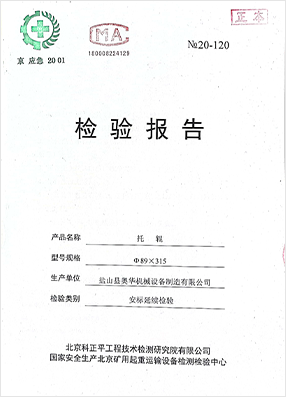 Afrikaans
Afrikaans  Albanian
Albanian  Amharic
Amharic  Arabic
Arabic  Armenian
Armenian  Azerbaijani
Azerbaijani  Basque
Basque  Belarusian
Belarusian  Bengali
Bengali  Bosnian
Bosnian  Bulgarian
Bulgarian  Catalan
Catalan  Cebuano
Cebuano  Corsican
Corsican  Croatian
Croatian  Czech
Czech  Danish
Danish  Dutch
Dutch  English
English  Esperanto
Esperanto  Estonian
Estonian  Finnish
Finnish  French
French  Frisian
Frisian  Galician
Galician  Georgian
Georgian  German
German  Greek
Greek  Gujarati
Gujarati  Haitian Creole
Haitian Creole  hausa
hausa  hawaiian
hawaiian  Hebrew
Hebrew  Hindi
Hindi  Miao
Miao  Hungarian
Hungarian  Icelandic
Icelandic  igbo
igbo  Indonesian
Indonesian  irish
irish  Italian
Italian  Japanese
Japanese  Javanese
Javanese  Kannada
Kannada  kazakh
kazakh  Khmer
Khmer  Rwandese
Rwandese  Korean
Korean  Kurdish
Kurdish  Kyrgyz
Kyrgyz  Lao
Lao  Latin
Latin  Latvian
Latvian  Lithuanian
Lithuanian  Luxembourgish
Luxembourgish  Macedonian
Macedonian  Malgashi
Malgashi  Malay
Malay  Malayalam
Malayalam  Maltese
Maltese  Maori
Maori  Marathi
Marathi  Mongolian
Mongolian  Myanmar
Myanmar  Nepali
Nepali  Norwegian
Norwegian  Norwegian
Norwegian  Occitan
Occitan  Pashto
Pashto  Persian
Persian  Polish
Polish  Portuguese
Portuguese  Punjabi
Punjabi  Romanian
Romanian  Russian
Russian  Samoan
Samoan  Scottish Gaelic
Scottish Gaelic  Serbian
Serbian  Sesotho
Sesotho  Shona
Shona  Sindhi
Sindhi  Sinhala
Sinhala  Slovak
Slovak  Slovenian
Slovenian  Somali
Somali  Spanish
Spanish  Sundanese
Sundanese  Swahili
Swahili  Swedish
Swedish  Tagalog
Tagalog  Tajik
Tajik  Tamil
Tamil  Tatar
Tatar  Telugu
Telugu  Thai
Thai  Turkish
Turkish  Turkmen
Turkmen  Ukrainian
Ukrainian  Urdu
Urdu  Uighur
Uighur  Uzbek
Uzbek  Vietnamese
Vietnamese  Welsh
Welsh  Bantu
Bantu  Yiddish
Yiddish  Yoruba
Yoruba  Zulu
Zulu conveyor components & parts
Understanding Conveyor Components and Parts A Guide to Efficient Material Handling
Conveyor systems are integral to modern manufacturing and distribution processes, facilitating the seamless movement of goods and materials. At the heart of these systems are conveyor components and parts that ensure efficient operation and reliability. Understanding these components is essential for anyone involved in logistics, manufacturing, or supply chain management.
1. What are Conveyor Components?
Conveyor components refer to the individual parts that make up a conveyor system. These components work together to transport materials from one location to another, significantly reducing the need for manual handling and increasing productivity. The main components include the conveyor belt, pulleys, rollers, motors, and control systems. Each part plays a crucial role in ensuring the system operates smoothly and efficiently.
The conveyor belt is perhaps the most recognizable part of a conveyor system. It acts as the surface on which materials are transported. Conveyor belts come in various materials, including rubber, fabric, and plastic, each suitable for different applications. Factors such as load capacity, belt speed, and environmental conditions determine the appropriate type of belt for a specific application. Proper maintenance of the conveyor belt is vital to prevent wear and ensure longevity.
3. Pulleys and Rollers
conveyor components & parts

Pulleys and rollers are essential for movement and support within the conveyor system. Pulleys are used to change the direction of the conveyor belt and are often found at both ends of the conveyor. They are crucial for tensioning the belt, which helps prevent slippage and ensures that materials move smoothly. Rollers, on the other hand, provide support along the length of the conveyor and reduce friction, making it easier for the belt to carry heavy loads. High-quality rollers contribute to the overall efficiency and lifespan of the conveyor system.
4. Motors and Drives
The motor is the powerhouse of the conveyor system. It provides the necessary force to drive the conveyor belt and is selected based on factors such as load requirements and desired speed. Motors can be coupled with various types of drives, including gearboxes, to achieve the required torque and speed. Properly selected and maintained motors ensure that the conveyor operates efficiently, reducing the risk of breakdowns and enhancing overall productivity.
5. Control Systems
Modern conveyor systems are often equipped with advanced control systems that allow for automated operation. These systems can include sensors, programmable logic controllers (PLCs), and human-machine interfaces (HMIs) that enable monitoring and control of the conveyor's operation. Automated systems not only improve efficiency but also reduce the risk of human error, ensuring that materials are handled safely and effectively.
Conclusion
In conclusion, understanding the components and parts of conveyor systems is crucial for optimizing material handling processes. By selecting the right conveyor belt, pulleys, rollers, motors, and control systems, businesses can enhance their operational efficiency and reduce costs. A well-maintained conveyor system not only boosts productivity but also contributes to a safer and more reliable work environment. Embracing advancements in conveyor technology can lead to significant improvements in material handling across various industries.
-
Revolutionizing Conveyor Reliability with Advanced Rubber Lagging PulleysNewsJul.22,2025
-
Powering Precision and Durability with Expert Manufacturers of Conveyor ComponentsNewsJul.22,2025
-
Optimizing Conveyor Systems with Advanced Conveyor AccessoriesNewsJul.22,2025
-
Maximize Conveyor Efficiency with Quality Conveyor Idler PulleysNewsJul.22,2025
-
Future-Proof Your Conveyor System with High-Performance Polyurethane RollerNewsJul.22,2025
-
Driving Efficiency Forward with Quality Idlers and RollersNewsJul.22,2025





























